The stirring conclusion to my 2014 reading…
In 2014, I read 20 fiction & non-fiction books. Here are numbers 1-8 ranked in order of my own most subjective preference. Not necessarily in order of literary greatness, but in terms of my enjoyment of the book, whether it dazzled me with language, or made me think new thoughts, or made me want to make things, or stayed with me long after I read it, or made me feel something, or all of the above.
A couple of asides:
– I’m a little chagrined that my 2014 Didion obsession coincided with this Didion-cultural-moment thing that culminated recently (the Céline ad, the consequent think pieces in The Awl, The Atlantic, another strange one in The LA Review of Books). (Oh jesus, I just spotted another one in The Cut I haven’t read.) It felt personal and intense (as writerly obsessions tend to feel), for reasons that had to with the writing itself rather than whatever Didion the person happens to signify (contrary to what The Awl essay seems to suggest). (I avoided, for example, A Book of Common Prayer, as I, as a Latin American, wanted to avoid a white-lady-abroad account of a made up Latin American country.)
– I’m wondering if the dominance of the big novel is finally fading? Not just with me, but generally, out there? Perhaps our time requires a different genre? Didion is one of many writers that I have found most compelling, exciting, masterful, needed now, whose best work is not the big novel. Others include: Grace Paley, Alice Munro, (short stories); Sontag (essays); Renata Adler (experimental novels, I guess); Anais Nin, Violette Leduc, Sheila Heti, Mathias Viegener, Karl Ove Knausgaard, Eileen Myles (hybrid journal, autobiography, memoir type stuff)…
Anyway, the list:
1. Madness, Rack and Honey (Wave Books, 2013) – Mary Ruefle
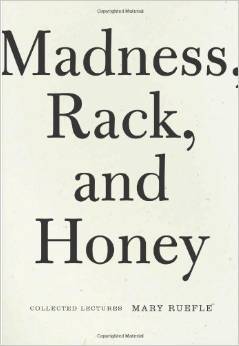
A compendium of her wise and brilliant lectures, primarily for readers and writers of poetry. Ruefle is so funny if you’re paying attention, like someone with a quiet voice who is acerbic and witty, but overshadowed by the loudmouths in the room. I especially loved the essays, “My Emily Dickinson,” “On Beginnings,” “Poetry and the Moon,” and the title essay.
2. The White Album (1979) – Joan Didion
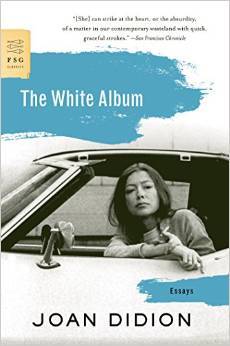
Slouching Towards Bethlehem is maybe overall a stronger collection, but “The White Album” is an essay I couldn’t recover from. I read it at least three times. The form resembles the message. Disparate pieces, fragments, including her own anxiety and paranoia, create the unsettling picture of 1968-1969.
3. My Struggle (Vol 1) (2012 in US, 2009 in Norway) – Karl Ove Knausgaard
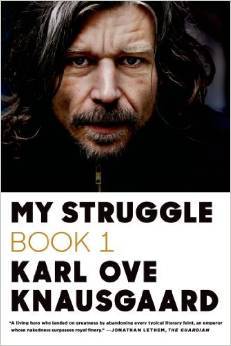
There has been a lot of focus on how the tediousness of the everyday functions in Knausgaard’s project, but I think the books would be better off without that element. For example, this volume became truly powerful and moving in the last third, when he has to deal with the death of his father (not a spoiler), both the physical and spiritual details of it. That is, when something actually happens. The details, however exhaustive, serve a function. The father has been a long shadow from the first image in the book, a truly artful structure. I felt it viscerally and closed the book permeated with the experience.
But it could do without the 70-page account of buying beer and having a lame New Year’s Eve when he was 15… I also love his philosophical meanderings, thoughts on modern life, which are also not part of the tediousness. I’d like to see them as stand-alone essays (for example, the digression about the mystery of visual art, why a particular painting might move you, or another about 17th-century vs. 21st-century consciousness).
4. My Life in France (2006) – Julia Child & Alex Prud’homme
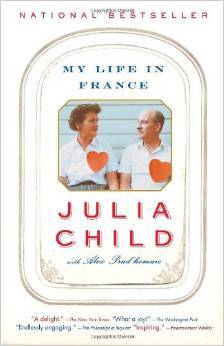
This book is an argument for making the bold move. Julia Child didn’t start cooking seriously until she and her husband moved to Paris when she was in her late 30s (still “very young” as she charmingly puts it). They had had adventures in China and Sri Lanka, both working for the State department. They later lived in Marseilles, Germany, Norway, and found elements to love in all of those places .Her voice in this book is enthusiastic, but also no-nonsense, crisply descriptive. It makes you want to love life, live your life, love your partner.
5. The Year of Magical Thinking (2005) – Joan Didion
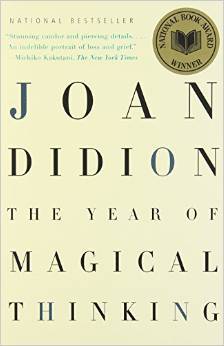
I was afraid of this book, as if coming closer to the stroke of tragedy running through it would open the door to tragedy; funny, this is the sort of “magical thinking” she’s examining. I liked this best as a portrait of a solid marriage. Happiness is described through detail, without commentary.
6. Slouching Towards Bethlehem (1968) – Joan Didion
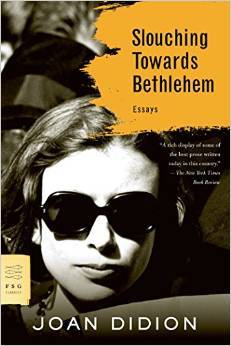
My favorite pieces were the “personals” – “On Keeping a Notebook,” “On Self-Respect,” “On Going Home.” “Goodbye to All That” is unforgettable. I found the title essay sort of pearl-clutching. I realize her point was to bring a different, sobering take on the Haight-Ashbury scene, but the lens was too small, or too filtered through her own darkness, perhaps?
7. The Group (1963) – Mary McCarthy
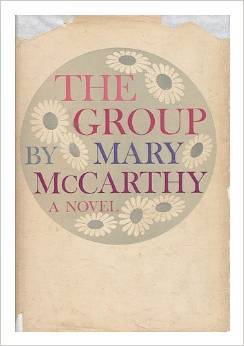
This struck me as a brave act in its time, so frank and unapologetic about women’s perspectives on sex, sexuality, social classes, work, power relations with men. It’s also expansive, in contrast with the compression favored by a lot women writers. It becomes an implied declaration that it’s all worth writing about, expansively, that such matters should indeed take up some room. Vivid, carefully drawn characters. A different take on New York in the 1930s – these characters inhabit the rich stratosphere above the Great Depression.
8. Play It As It Lays (1970) – Joan Didion
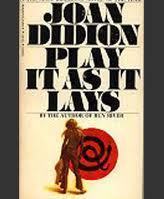
Not a word out of place, and it could not be more bleak. I love this length for a novel (about 150 pages); Didion has said she prefers novels that can be read in a single sitting.
